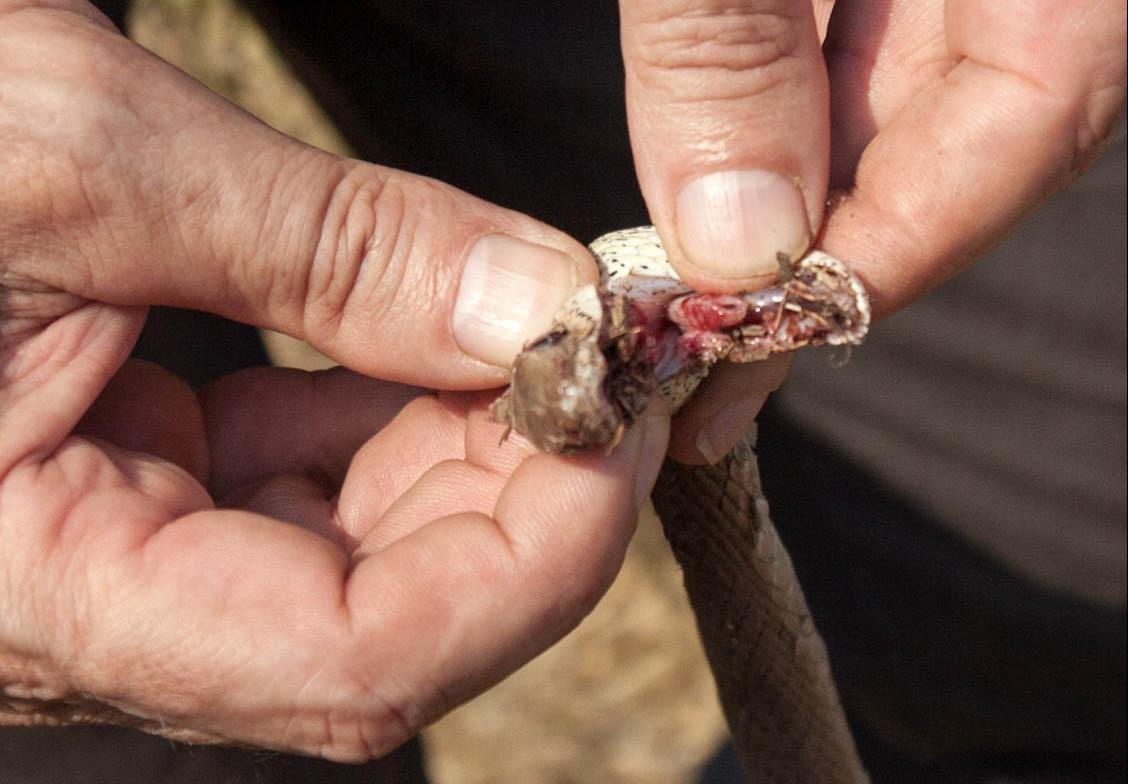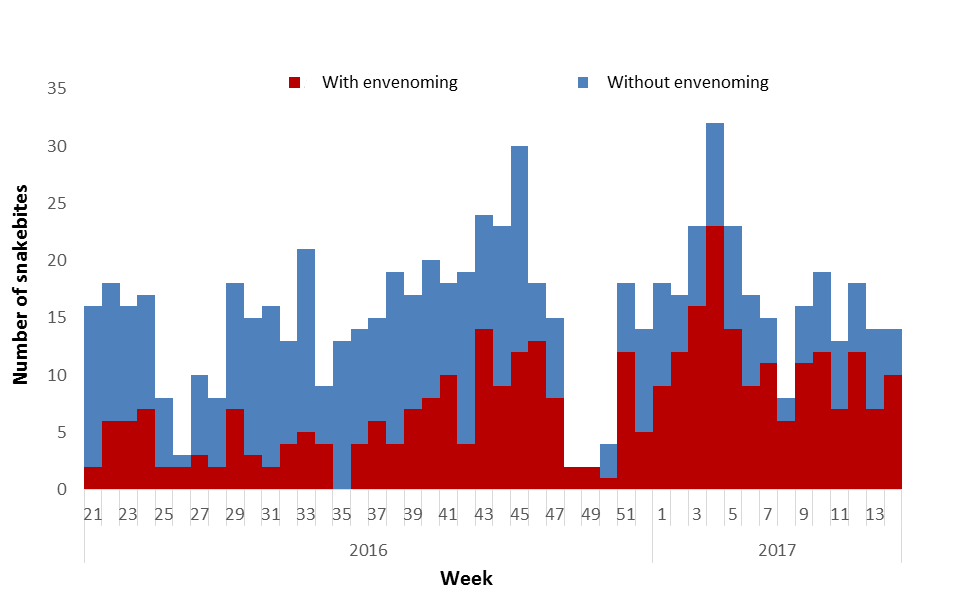Snakebite
Envenoming secondary to snakebite was added to WHO’s list of neglected tropical diseases in 2017. Estimations of the burden of snakebite are notoriously poor, and this lack of information contributes to neglect of the condition. Estimations of the burden of snakebite are notoriously poor, and this lack of information contributes to neglect of the condition.Nonetheless, snakebite is a major cause of morbidity and mortality in two regions: South Asia and Africa. Estimates vary widely, but it is likely that there are hundreds of thousands of snakebites1 and tens of thousands of snakebite deaths each year2. These snakebites will be from a range of poisonous snake species, each producing a different venom.
Lack of access to care, including antivenoms, means that the number of snakebites is certainly underreported, and that the mortality due to enevenoming is higher than it should be3,4.
Snakebite is a major morbidity in several Médecins Sans Frontières (MSF) projects in sub-Saharan Africa and the Arabian peninsula. Evidence regarding safety and efficacy of many antivenoms currently available is severely limited.
Working towards an affordable antivenom
Epicentre is working with MSF to describe the importance of snakebite in communities, the treatment of snakebite in MSF hospitals, and hopes to contribute to formal evaluations of antivenom efficacy in the future.
Describing the burden of disease
Field epidemiology

In Agok, South Sudan, MSF treats 200-400 snakebites each year in a rural hospital. The population’s access to care is difficult, so there was concern that the patients seen in the hospital did not represent the true burden of disease.
Epicentre performed a community-based survey to estimate the percentage of the population bitten by a snake over the course of the year. Two different methods were used, but the results were concordant and extremely surprising: in the rural areas surrounding Agok, between 2-4% of the population had been bitten by a snake in the previous year.
Descriptive epidemiology in Paoua, Central African Republic
In Paoua, Central African Republic, MSF treats up to 750 snakebites per year in a rural hospital. Epicentre described the roll-out of two new antivenoms in the clinical treatment protocol in Paoua, following 347 patients during their hospitalization and in the month thereafter (as well as another 375 snakebite victims who did not need antivenom therapy).
The two new antivenoms were effective and safe, and the detailed information collected allowed for change of dosing used in the project.

Developing better polyvalent antivenoms
Field and clinical trials

Epicentre is actively collaborating with MSF and other partners to plan and implement a randomized, double-blind, controlled trial that compares the efficacy and safety of two different polyvalent antivenoms in sub-Saharan Africa.
These examples underscore that the rural poor are disproportionally affected by snakebite, and less likely to be able to access potentially lifesaving care5.
References
1 Gutiérrez JM, Calvete JJ, Habib AG, Harrison RA, Williams DJ, Warrell DA. Snakebite envenoming. Nat Rev Dis Prim. Macmillan Publishers Limited; 2017;3. doi:10.1038/nrdp.2017.63
2 Mohapatra B, Warrell DA, Suraweera W, Bhatia P, Dhingra N, Jotkar RM, et al. Snakebite mortality in India: A nationally representative mortality survey. PLoS Negl Trop Dis. 2011;5. doi:10.1371/journal.pntd.0001018
3 Brown NI. Consequences of neglect: Analysis of the sub-saharan african snake antivenom market and the global context. PLoS Negl Trop Dis. 2012;6. doi:10.1371/journal.pntd.0001670
4 Williams DJ, Gutiérrez JM, Calvete JJ, Wüster W, Ratanabanangkoon K, Paiva O, et al. Ending the drought: New strategies for improving the flow of affordable, effective antivenoms in Asia and Africa. J Proteomics. Elsevier B.V.; 2011;74: 1735–1767. doi:10.1016/j.jprot.2011.05.027
5 Harrison RA, Hargreaves A, Wagstaff SC, Faragher B, Lalloo DG. Snake envenoming: A disease of poverty. PLoS Negl Trop Dis. 2009;3. doi:10.1371/journal.pntd.0000569






